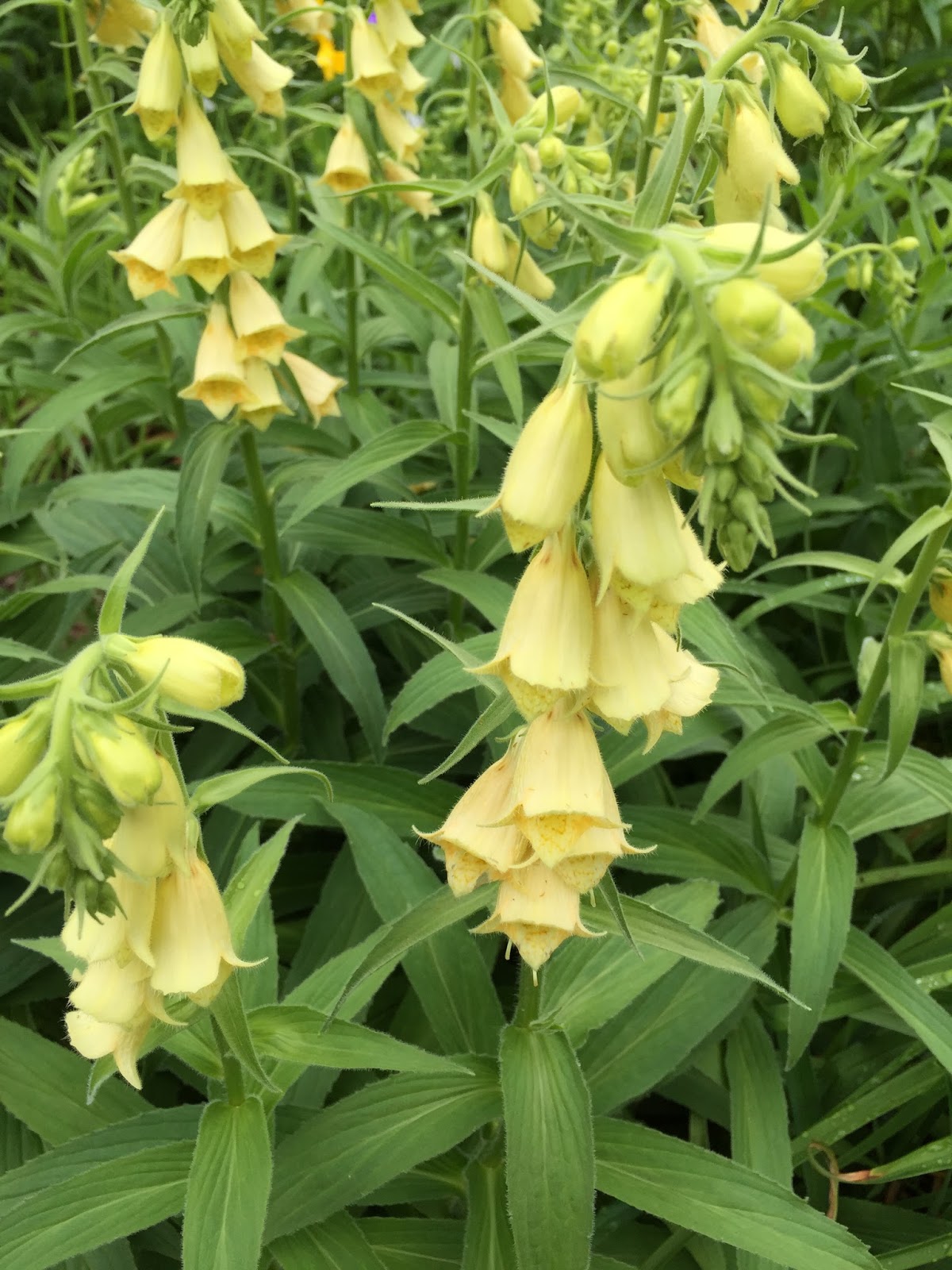 |
| Digitalis grandiflora |
Dear Hortense,
Do you have foxglove growing in your garden?
I have large yellow-flowered foxglove, Digitalis grandiflora, growing in my garden. It’s right in the middle of Plopper’s Field, my perennial border where I carefully plop new plants in any spot that looks open.
I do, of course, sometimes, if I think about it, consider what’s growing around the bare spot before I plop in a new plant to make sure it won’t get lost amongst the other plants.
Then its up to the plant to grow as best it can and give me a big show so I notice it.
The last several years, I’ve gotten a big show from this foxglove, and I couldn’t be happier.
Foxglove attracts garden fairies.
Does everyone already know that? Did you know? If not, let me repeat.
Foxglove attracts garden fairies.
Foxglove also provides clues as to whether or not garden fairies live in or near your garden.
The first clue is to look inside the little foxglove florets to see if you can make out any spots or other markings.
 |
| Look for spots inside the florets |
The presence of these spots indicate the garden fairies have found your garden and your foxglove and have been dancing all through them. Thus the spots. My foxglove are full of spots. I guarantee yours are, too.
The other clue, and I apologize for the washed out photo, is to check for missing florets.
 |
| Look for missing florets. |
A missing floret means some garden fairy took a liking to a floret and took it for a hat.
Be grateful if this happens in your garden. There is no greater compliment that can be paid by a garden fairy than to steal a floret of foxglove to make a hat.
Please do go out to your garden and look at the blooming foxglove and report back on fairy garden activity.
By the way, if you aren’t growing any foxglove, Digitalis grandiflora is quite easy to grow. It forms a nice clump and if you let it set seed, it will self-sow. However some gardeners may be reluctant to let it go to seed because those seed heads won’t be the prettiest thing in the garden.
Other gardeners may shy away from foxglove because it is poisonous. Dead Man’s Thimble is another common name. But it is apparently not poisonous to garden fairies.
But otherwise, it is a good flower to grow, one that provides signs of garden fairy activity, and thus I’ll grow it in my garden. And I’ll even let it self-sow a little.
Hortfully yours,
Carol


Dear Carol, I love your post! Groetjes, Hetty
Love foxgloves! I don't have room for them in my small garden!
I am lucky that foxgloves are native to the Pacific Northwest and are found in profusion healing recently logged areas. I transplanted some to my garden two years ago and they are naturalizing very well. I am so delighted to learn that their florets are used by the fairies for hats. I enjoy learning ways to encourage garden fairies in my garden and this post warmed my heart. Mary
I checked, and there have definitely been fairies dancing through my foxgloves. I even found evidence of missing blossoms, so there must have been a hat parade. To think that I thought the blossoms simply fell off!